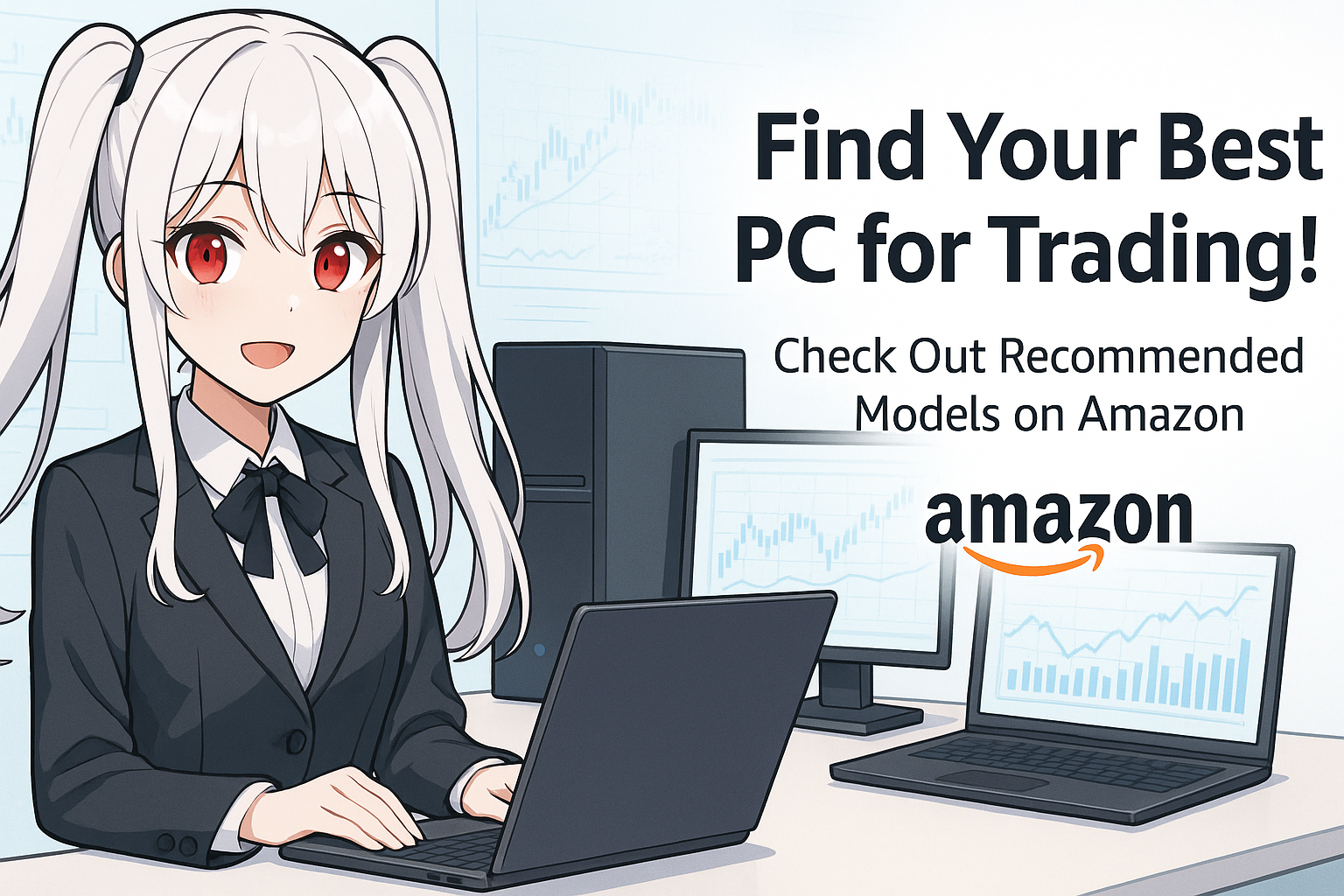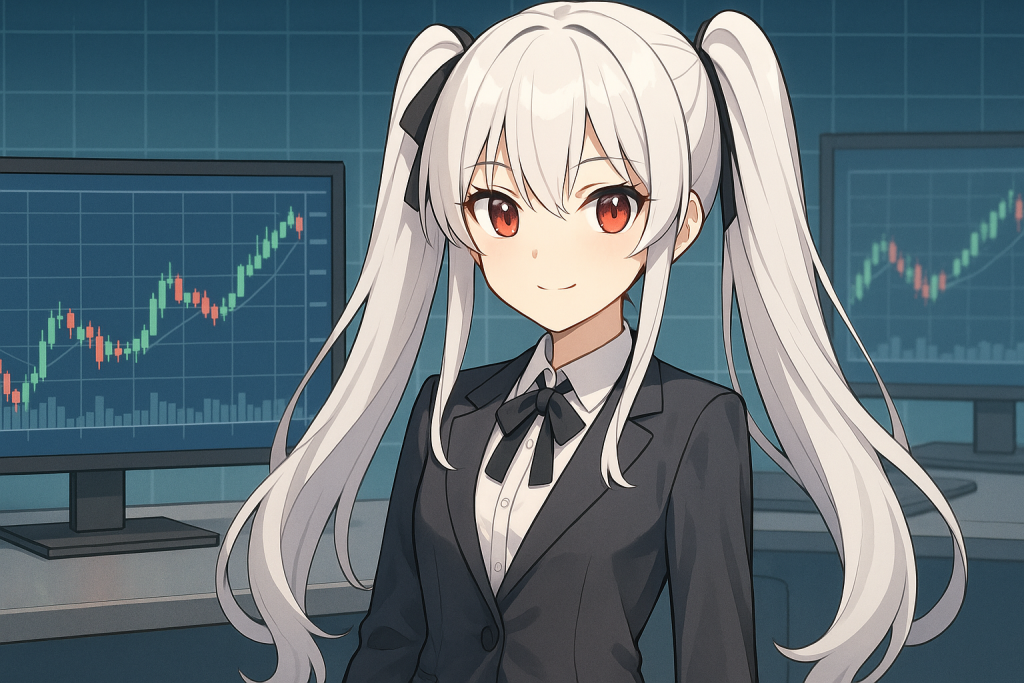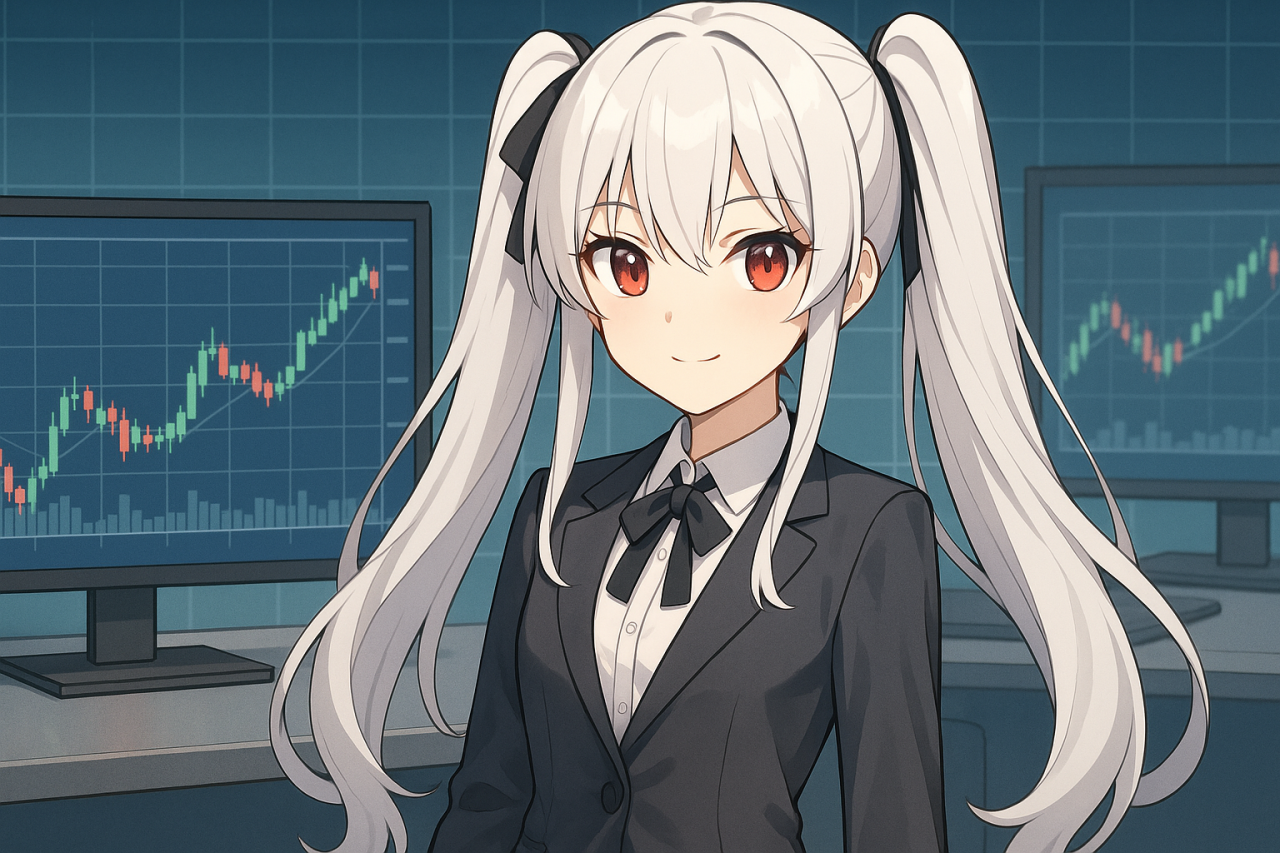What Makes a PC Ideal for FX Trading?
When conducting FX trading, a PC is an extremely important tool. While trading can be done on smartphones and tablets, a high-performance PC is essential for serious analysis and rapid execution. By choosing the right PC, you can build a comfortable trading environment and achieve more favorable trades.
This article provides a detailed explanation of the specifications for PCs ideal for FX trading and how to choose peripheral equipment. Understand the key points for selecting a PC to maximize FX trading performance and find the optimal machine.
Why a PC is Needed for FX
There are several reasons why a PC is necessary for FX trading. First, you can view charts and information on a large screen, making it easier to grasp overall market trends. Displaying multiple charts simultaneously and overlaying technical indicators for analysis is also straightforward.
Additionally, on a PC, the trading platform is highly operable, allowing fast orders and settlements. Moreover, when using an automated trading system (EA), the PC must run continuously 24 hours, requiring stable operation.
For these reasons, a PC is more suitable for FX trading than smartphones or tablets.
The Importance of a Comfortable Trading Environment
A comfortable trading environment greatly influences FX trading results. Equipping a high-performance PC and peripherals allows you to focus on trading without stress and make calm decisions.
Furthermore, a comfortable environment helps prevent fatigue during long trading sessions and maintains concentration. Especially for day trading or scalping, where multiple trades occur in short periods, a comfortable setup is essential. Building such an environment enhances trading efficiency and leads to increased profits.
PC Specifications Needed for FX Trading
The PC specifications required for FX trading vary depending on your trading style and the platform you use, but it is important to understand the minimum and recommended specs.
We explain the role and selection points for major components such as CPU, memory, and storage. We also introduce peripherals like graphics cards and monitors that enhance the trading environment. Use this as a reference to choose the optimal PC specs for your budget.
【Ad】Amazon

How to Choose a CPU
The CPU is one of the most important components that determines a computer’s processing power. In FX trading, you need a certain level of processing capability to display multiple charts and technical indicators simultaneously or run automated trading systems.
At a minimum, we recommend choosing a CPU that is Intel Core i5 or higher, or AMD Ryzen 5 or higher. If you want a more comfortable trading environment, consider a CPU that is Intel Core i7 or higher, or AMD Ryzen 7 or higher. Clock speed and core count are also important factors; higher numbers mean greater processing power. Choose the optimal CPU while balancing your budget.
Importance of Memory
Memory is where a computer temporarily stores data, and insufficient capacity can cause slow performance. In FX trading, you need ample memory to run multiple applications simultaneously and process large amounts of data.
We recommend installing at least 8GB of memory, and 16GB or more is recommended. Especially if you use automated trading systems, you may need even more memory. The type of memory also matters; choosing high‑speed DDR4 or DDR5 can create a more comfortable trading environment. As your budget allows, install as much memory as possible.
Types and Capacity of Storage
Storage is where a computer stores data, and there are two types: HDD (hard disk drive) and SSD (solid‑state drive). SSDs are much faster at reading and writing data than HDDs, so the computer and applications start up quickly.
In FX trading, we recommend installing an SSD. For capacity, choose at least 256GB, and 512GB or more is recommended. Consider the size of trading data and software, and choose a capacity with plenty of room. You can install the OS and trading platform on the SSD and add an HDD for data storage.
Peripheral Devices for Comfortable FX Trading
To make FX trading comfortable, not only the computer’s specifications but also peripherals are important. In particular, a multi‑monitor setup, a stable network environment, and high‑performance mouse and keyboard are essential for improving trading efficiency and accuracy. By selecting and configuring these peripherals appropriately, you can build a more comfortable trading environment. We will explain in detail how to choose and set up peripherals.
Building a Multi‑Monitor Environment
A multi‑monitor environment is very effective for FX trading. You can display multiple charts simultaneously, check news and economic indicators, and use trading platforms and analysis tools side by side. This makes it easier to grasp overall market trends and allows you to make more accurate decisions.
We will explain key points for building a multi‑monitor environment, such as monitor size and resolution, arm selection, and graphics card performance. Monitor placement and angles are also important, so consider adjustments that reduce fatigue during long trading sessions.

Stable Network Environment
A stable network environment is essential for FX trading. If the internet connection drops during a trade, orders may be delayed or settlements may fail, potentially leading to significant losses.
Base your setup on a wired LAN connection, and if you use Wi‑Fi, choose a reliable router. Speed is also important, so consider reviewing your contract plan to ensure sufficient bandwidth. Having a backup connection is also an effective measure. By building a stable network environment, you can trade with confidence.
Recommended PC Manufacturers and Models
We introduce recommended PC manufacturers and models for FX trading. Major manufacturers such as DELL, HP, and Lenovo are highly reliable and have robust support systems, so you can use them with confidence.
There are many models from each manufacturer that meet the specifications required for FX trading. There are various types such as desktop PCs, laptops, gaming PCs, etc., but choose the optimal model that fits your trading style and budget. By selecting a customizable model, you can freely choose the necessary specifications. We recommend comparing and evaluating actual products at each manufacturer’s official website or electronics retailers.
Summary of Choosing a PC for FX Trading
To choose a PC optimal for FX trading, you need to consider not only specs like CPU, memory, and storage, but also peripherals and budget balance. Match your trading style and platform, determine the necessary specs, and pick the best one.
You can also reduce initial costs by using used PCs or gradually upgrading peripherals. Use the content explained here to build a comfortable trading environment and improve FX trading results.
Balance of Specs, Peripherals, and Budget
When choosing a PC for FX trading, it’s important to consider the balance of specs, peripherals, and budget. While selecting a high-performance PC is important, if it significantly exceeds your budget, consider adjusting specs within a reasonable range or upgrading peripherals later.
Similarly, while it’s important to have high-performance peripherals, you can start with the minimum necessary and upgrade gradually. Finding the optimal balance according to your budget is key. If you want to keep initial costs low, using a used PC is also an effective approach.
Using Used PCs
Used PCs are cheaper than new ones, making them an effective option if you want to reduce initial costs. If a used PC meets the specs required for FX trading, you can trade comfortably.
However, when choosing a used PC, it’s important to buy from a reputable retailer. Check the warranty period and return policy to prepare for any potential failures. Also, carefully inspect the used PC for scratches, dirt, or malfunction. Verify that the OS and software are updated to the latest versions. By using a used PC, you can reduce initial costs while building a comfortable trading environment.
FX Trading in a Comfortable Environment
FX trading requires concentration and calm judgment, so it’s important to trade in a comfortable environment. Equip yourself with an optimal computer and peripherals, and build a setting where you can focus on trading without stress.
Also, it’s crucial to manage trading hours and breaks appropriately, and to approach trading in a relaxed state of mind and body. By trading FX in a comfortable environment, you can achieve better results. We hope this article helps you succeed in FX trading. Enjoy FX trading in a comfortable environment.
【Ad】Amazon











